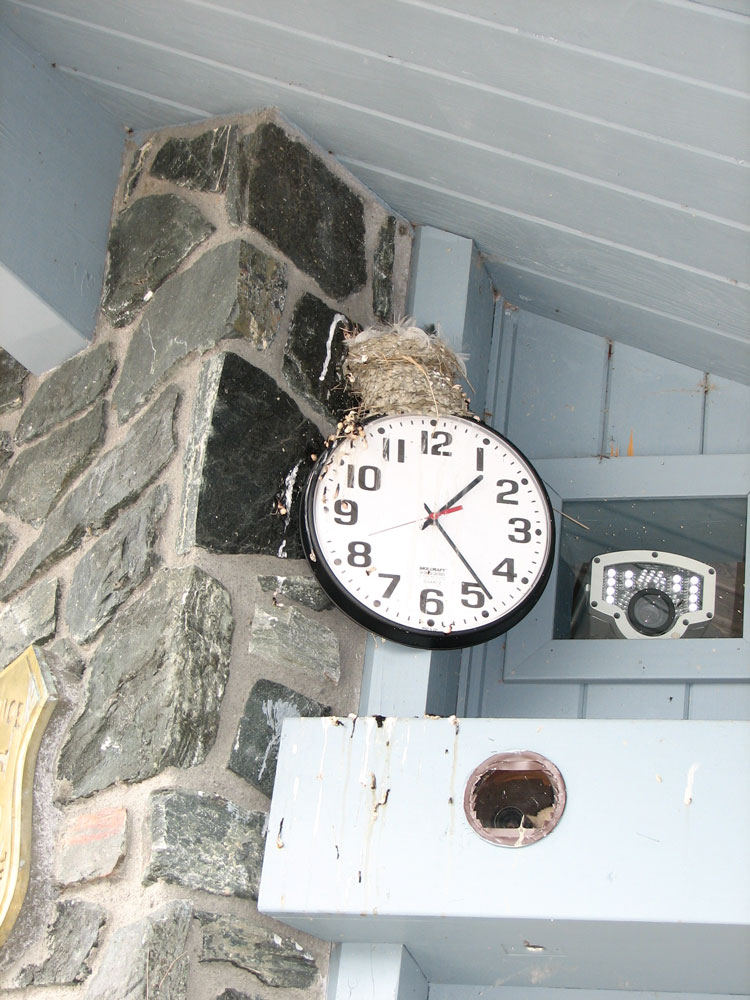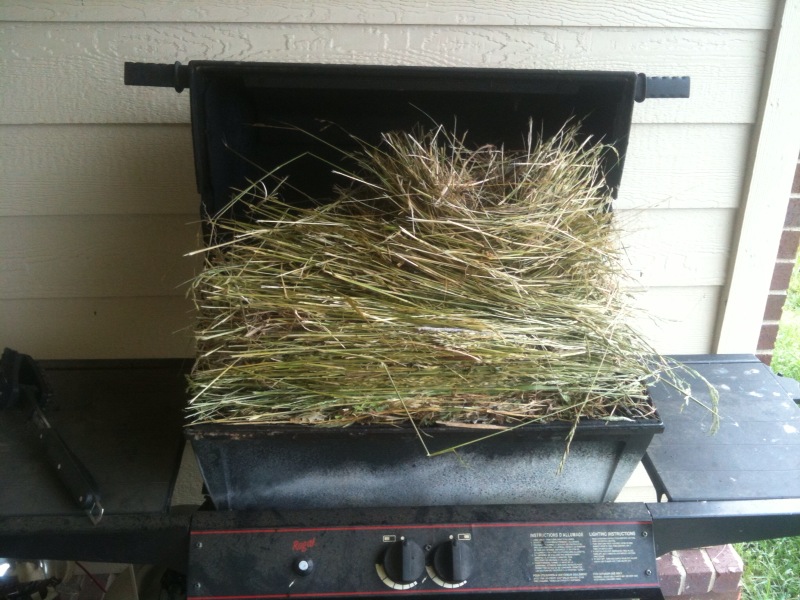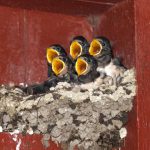En esta galería de fotos encontrarás ejemplos interesantes de cómo diferentes especies de aves construyen sus nidos:
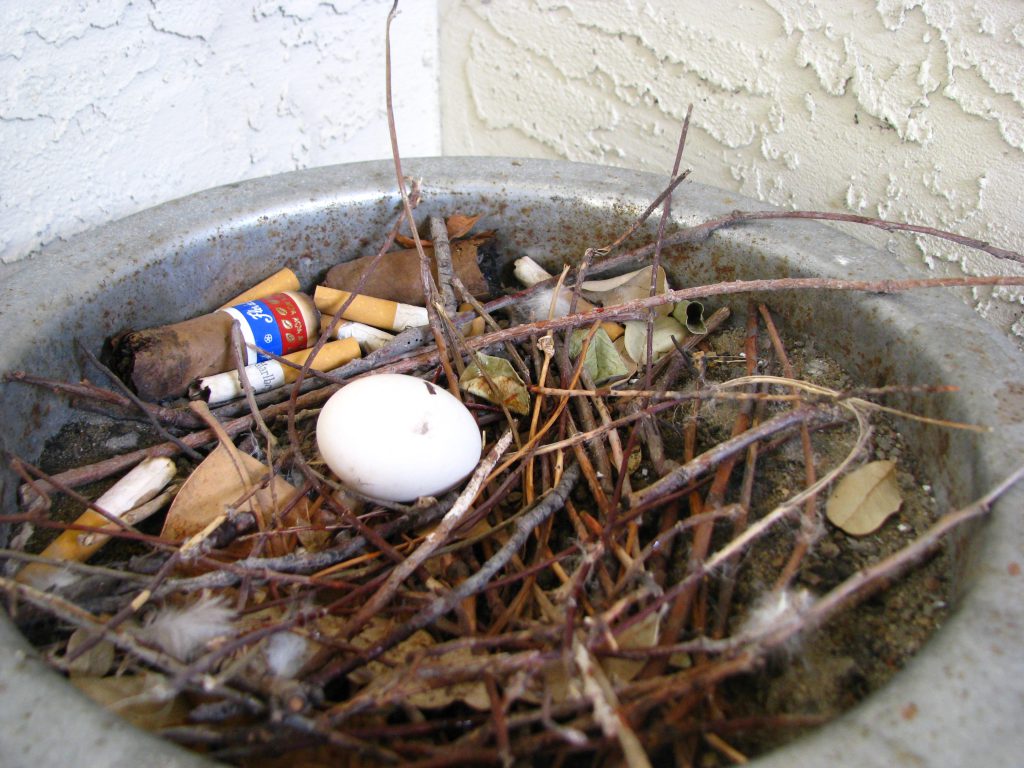
Rock Pigeon nests might be as simple as a couple of sticks collected on a flat platform. Rock Pigeon parents incubate the eggs for about 18 days. This nest is in an urban stairwell (photo by Pauline Schafer & Tobias Hagge, TX).
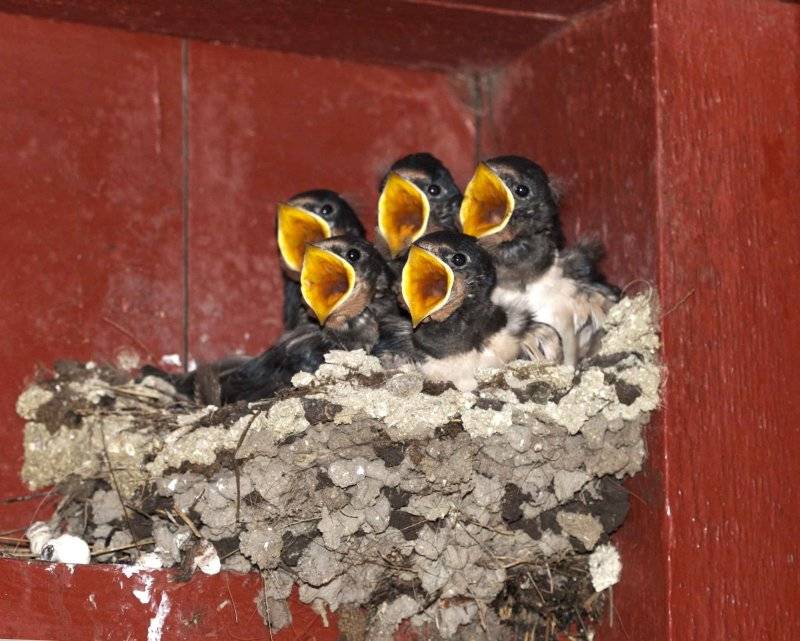
My photo is not so unusual but it was taken in a location very dear to me–the ancient city of TROY. I usually live overseas (China, Czech Republic, Malta, Puerto Rico,Tunisia and hopefully to the Marshall Islands next) teaching ESL. I spent one summer in Greece and Turkey on vacation wandering from one evocative place to another. While in Troy, walking around reading snippets of Homer and listening for the tragi-brave sounds of battle, I heard quite another sound. Loud baby squawks, quiet, more loud baby squawks. I followed stealthily until I came to a cross timber and found these precious little faces. Suddenly, Mom arrived with a nice morsel. Back and forth tending the most assertive ones. Being so close was thrilling. Amid the ghosts and in a nest made of crumbles of the famous fortress were little creatures proclaiming yet another universal theme–nature is glorious.
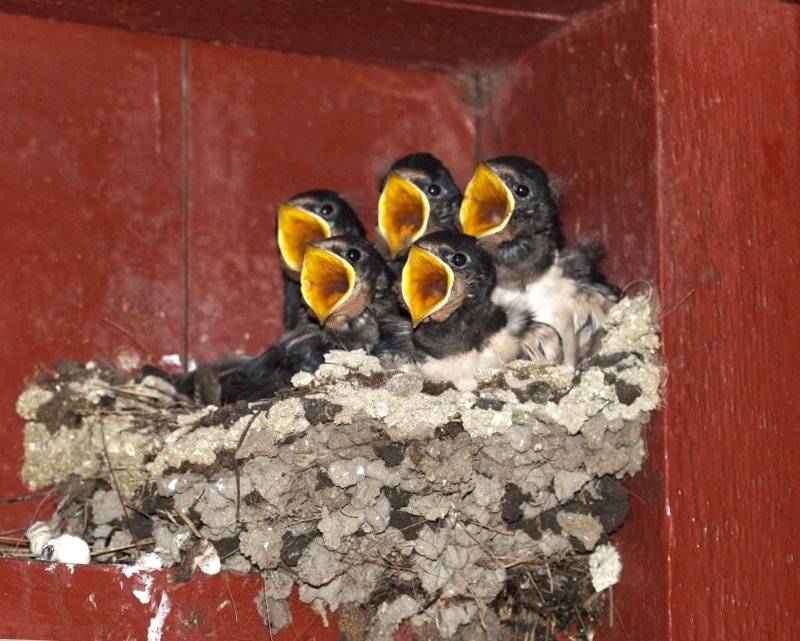
Barn Swallows might make more than 1200 trips with mouthfuls of mud to build their nest (photo by Karen Campbell in Troy, Turkey).
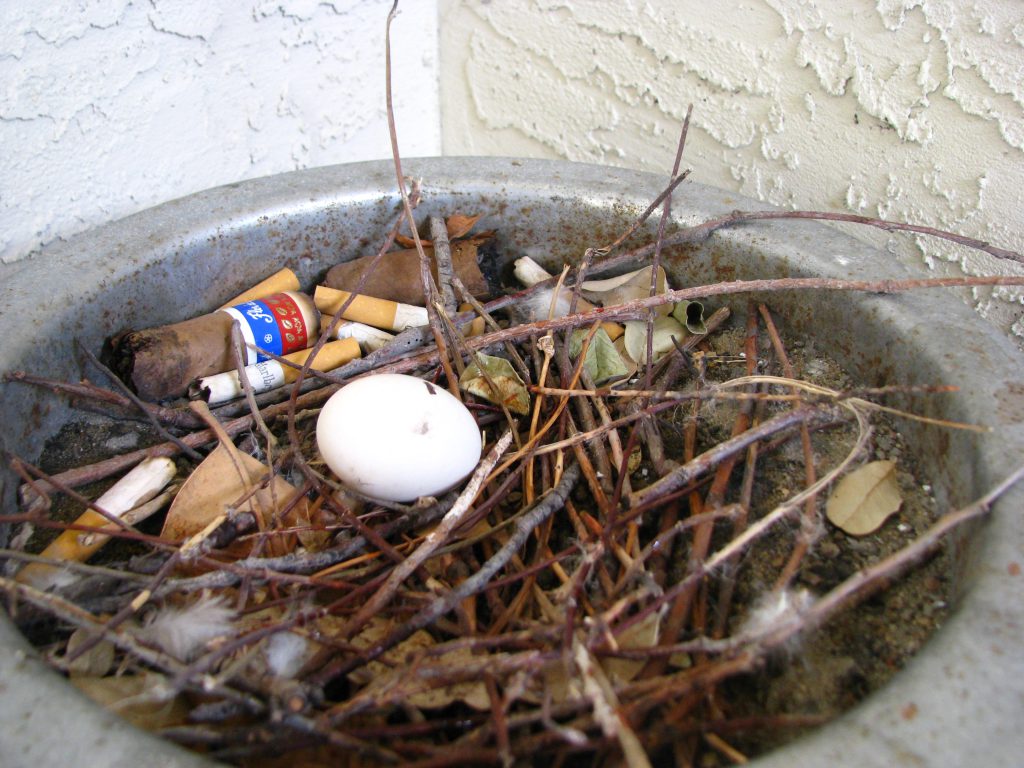
My husband discovered this pigeon nest in a stairwell while stopping by our mortgage company in Dallas, Texas. We are in the process of nesting, buying a house and getting ready to have a baby. The details of buying a house can be downright tedious and unglamorous, but this nest was a reminder of the point of it all. I think the presence of birds adds an air of elegance to any setting, even if those birds are the urban pigeon.
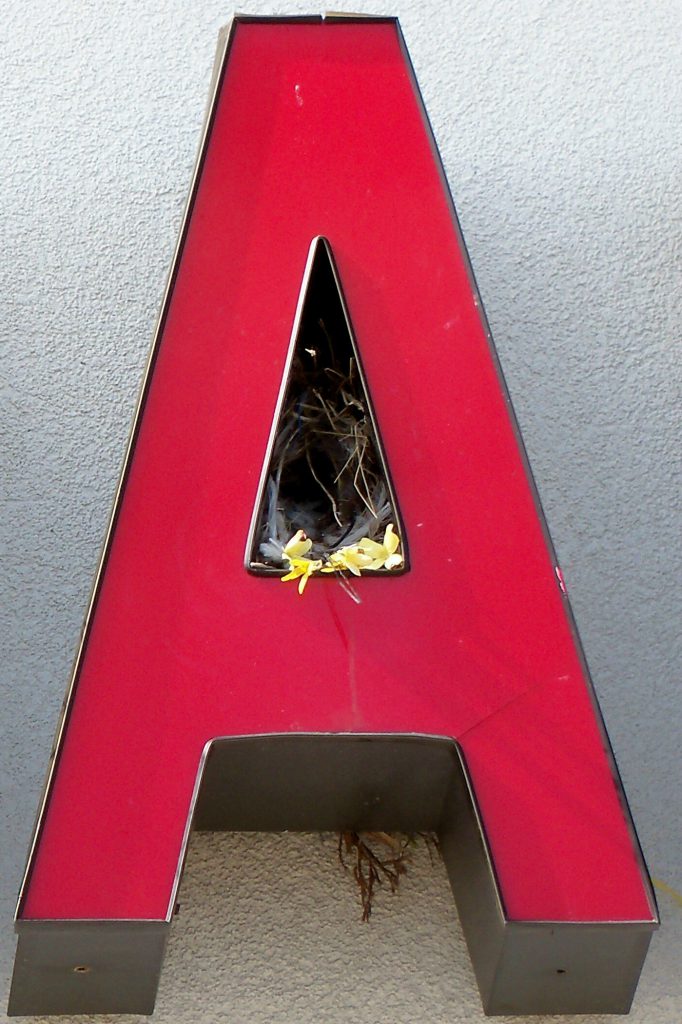
Some birds, like House Sparrows, like to nest in a protected hole, or cavity. They will collect nest material and bring it to the nest…can you see the artificial forsythia in this nest outside a craft store? (photo by Stacey Wyman of Somersworth, NH).
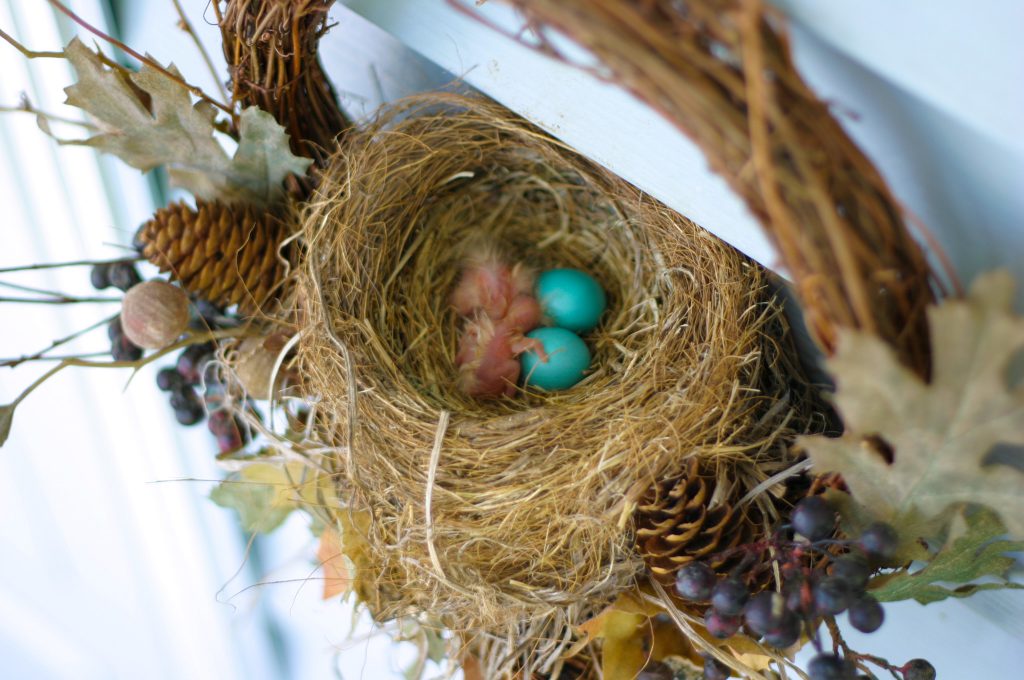
American Robins might nest three times a year, but only 40% of those nests will produce young (photo by Meridian Stiller of Virginia Beach, VA).
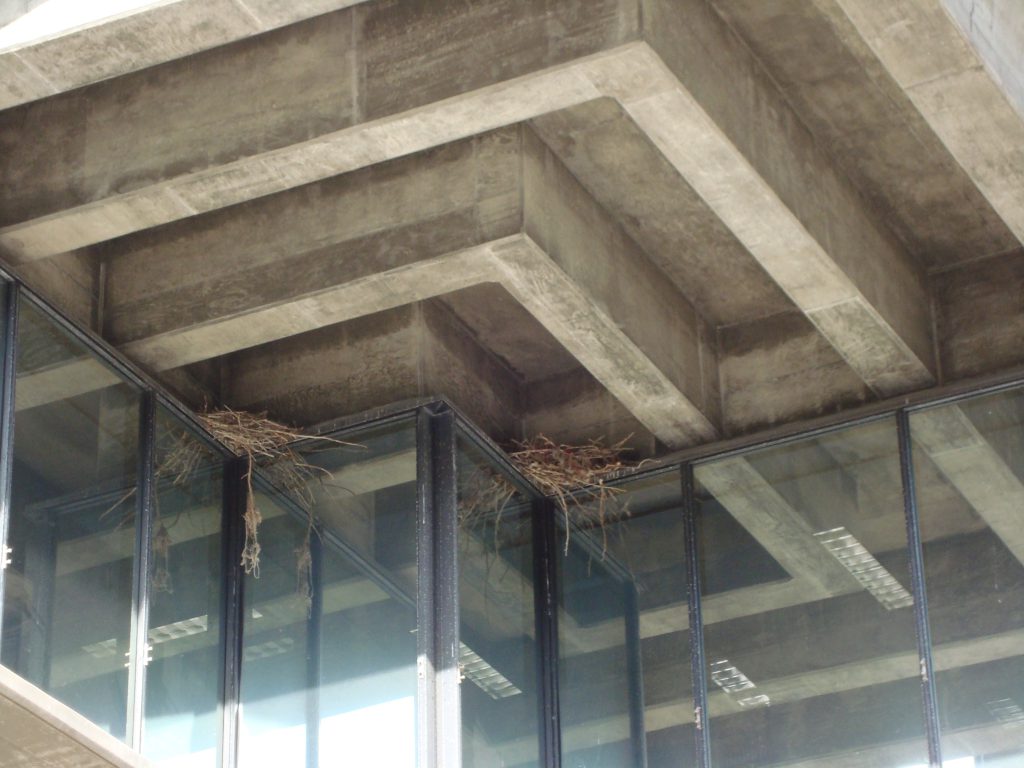
Common Ravens might nest on a cliff, in the crook of a tall tree, a power line tower, or here by a library. They usually prefer places where there is less human foot traffic…is this a hint that fewer students are visiting the Geisel Library at UCSD? (photo by Rachel Graham of San Diego, CA).
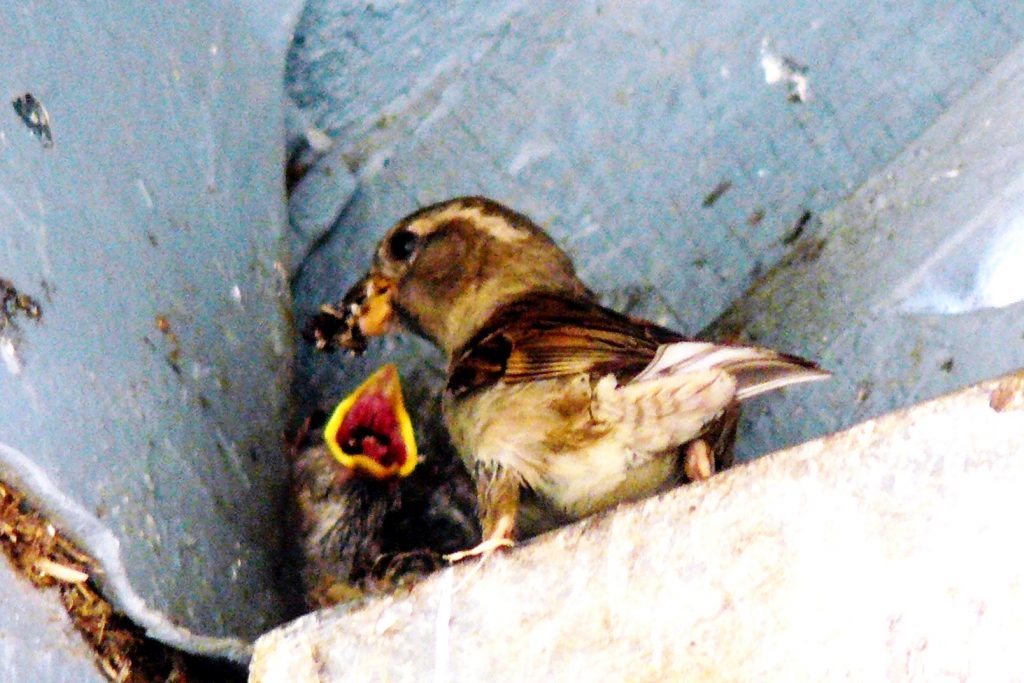
Small birds might bring food to the nest from 4 to 12 times an hour! This is a female House Sparrow feeding its young (photo by Terri Sabados of W Long Branch, NJ).
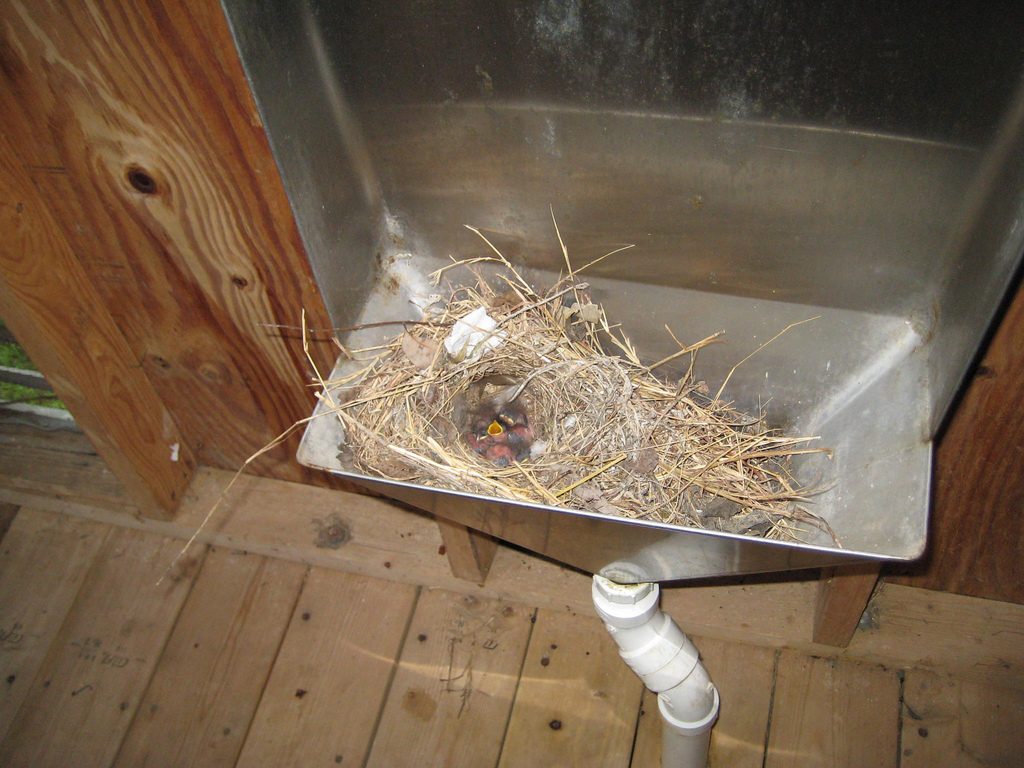
Some birds build their nests in places that may inconvenience humans, but are perfect in the birds’ view, like this nest in a seldom-used outhouse urinal. Birds look for places that provide shelter and are safe from predators. They defend their breeding territory (photo by Vincent O’Brien of Austin, TX).
